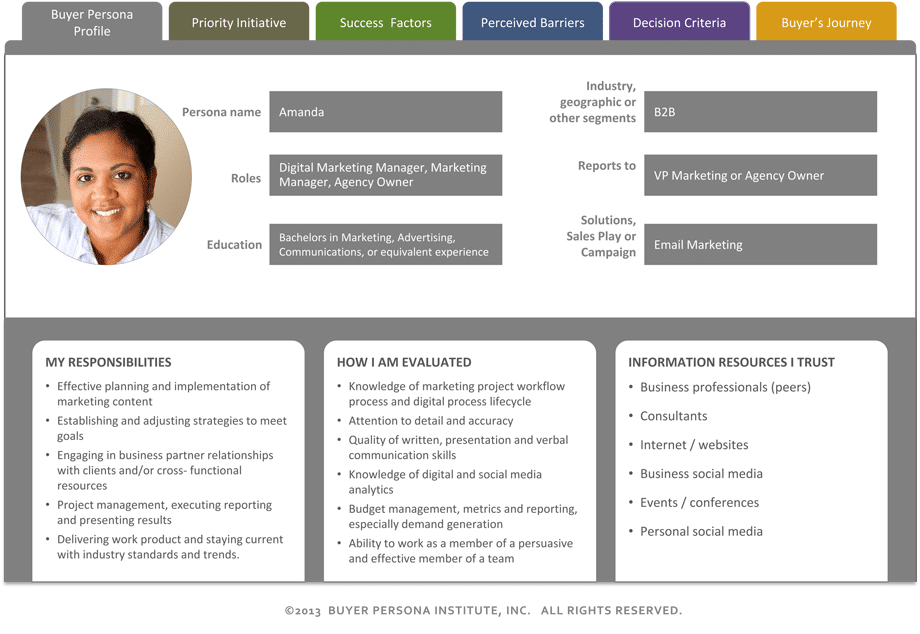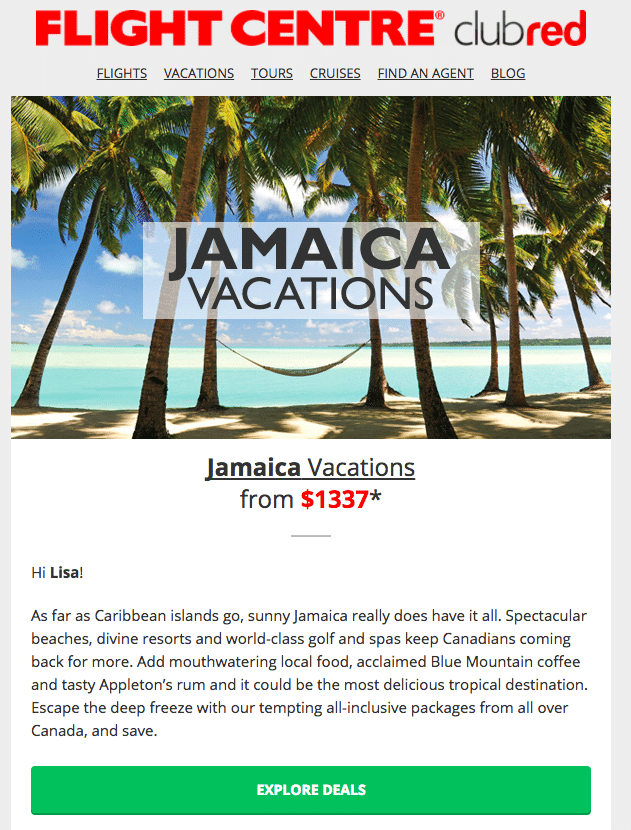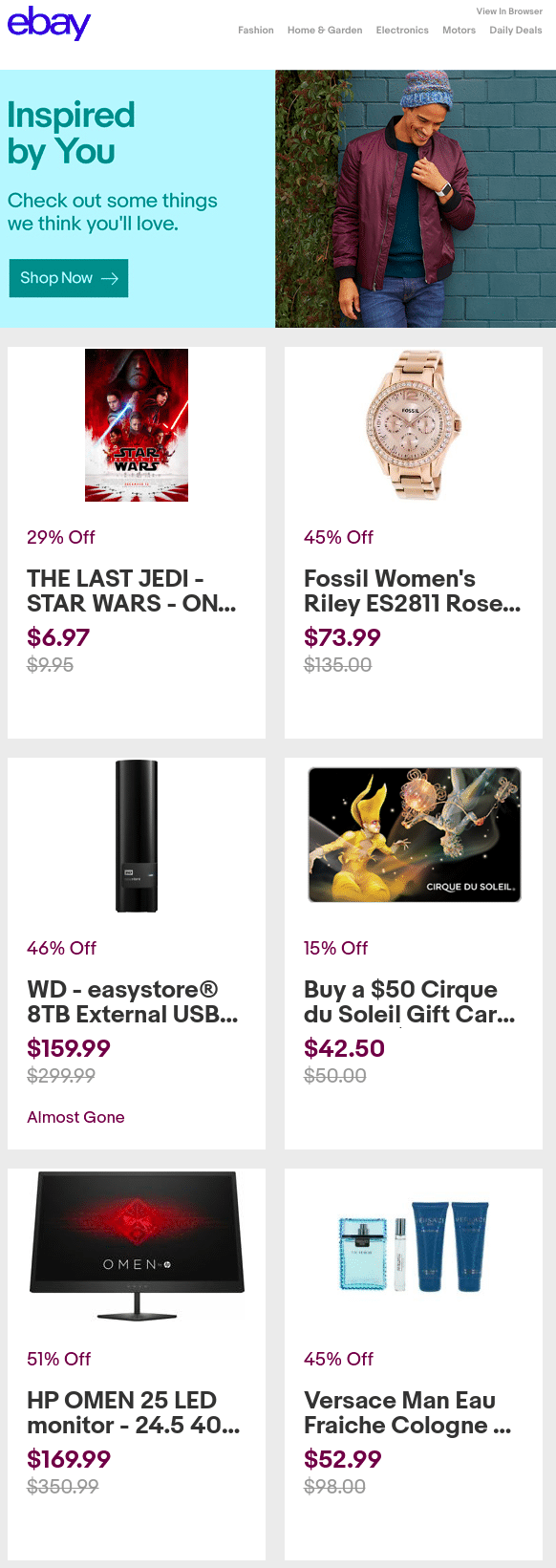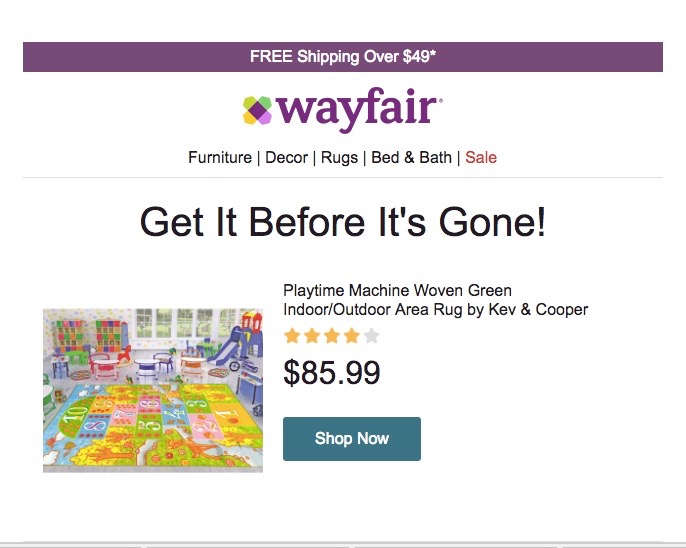This is the year your email marketing strategies go from basic to killer. By leveling up your tactics, you can enjoy soaring engagement rates and truly connect with your audience using email.
In 2018, you can set goals to improve response rates, brand awareness, and revenue by using advanced email marketing techniques that connect with subscribers on a more personal level.
To help you get the best results possible, here are four email marketing tactics worth mastering this year.
1. Build customer personas through advanced tracking
To send emails that customers can’t ignore, you have to know your customers. That means going beyond what products they like to buy from you. You want to know everything you can about your audience. From their weekend hobbies, to work problems, the more specific information you know the more tailored your campaigns can be.
Data collection can’t be ignored in 2018. This year, your goal should be to collect and use data from your website, mobile apps, booking systems, and ecommerce platforms to compile comprehensive customer personas. This will help you understand each segment of your audience.
Here’s a look at a customer persona. Note how much detail this persona provides.

2. Upgrade segmentation to include behavioral triggers
Most marketers are segmenting their emails. Why? It’s because segmentation gets results. In fact, 58% of revenue comes from segmented, targeted emails.
But, segmenting your list by demographic information (gender, location, age) is only a start. This year, step up your game and start segmenting your list by behaviors.
Using your personas, you can create emails that offer tailored message to each niche. Take the email below from Flight Centre, for example.
This email was sent to a small segment of subscribers who are interested in affordable Caribbean vacations. The link suggests air and hotel options, not cruises or bed and breakfasts because Flight Centre knows what this subscriber is interested in.

What if a customer’s interests change? With Campaign Monitor, segments are dynamic so subscribers can move in and out of lists based on their activities. That means you’re not constantly mining your analytics for trends and manually moving contacts. It’s all done for you.
3. Send emails based on a subscriber’s actions
To further tailor emails, keep track of how subscribers interact with your brand. What have they purchased in the past? How frequently are they buying? Are they browsing your site for a specific kind of product?
Use a subscriber’s actions to steer your email marketing campaigns. Here’s a look at emails you can send based on how a subscriber interacts with your brand:
Product recommendations
Customers love recommendations, if they’re of interest. You can suggest products to customers based on past purchases or website history. If you incorporate this kind of data, subscribers receive suggestions that are relevant to their taste and lifestyle.
Here’s a great example of product suggestions from eBay. Based on a customer’s viewing and purchase history, this email was sent to the subscriber:

Abandoned cart emails
Customers abandon carts more frequently than you might think. Research suggests almost 70% of online shopping carts are abandoned, according to Baymard Institute.
If a customer leaves items behind, let this action inspire an email campaign. Send an email that’s specifically designed to get the subscriber to make a purchase.
You can automate cart abandonment emails, so they’ll arrive in subscribers’ inboxes without much effort. When a cart is abandoned, it triggers an email that shows the subscriber the products they were interested in and gently nudges them toward the checkout.
You can send one reminder email or you can send a series. Research shows sending three emails when a cart is abandoned results in a 56% increase in revenue compared to sending just one, according to Experian.
Here’s an example of an abandoned cart email from Wayfair. The email’s subject line said, “The item you left behind sells out fast.” The email creates a sense of urgency while reminding the subscriber what the product looks like and costs.

This could be the first email in the series. Others could include a new price alert, a coupon, or an availability update.
VIP deals
Use your data to create a list of VIP customers. These might be customers that spend a certain amount of money with you monthly or have a certain purchase frequency. Once defined, you can send this group of loyal subscribers exclusive deals.
Take a look at how Sephora, a Campaign Monitor customer, segments its VIP customers. If a subscriber spends over $200 they’re considered a VIP and sent emails that differ from the rest of the group.

4. Automate drip campaigns
Are you following up with subscribers? This year, make it a priority through drip campaigns.
You don’t have to deploy a one-and-done strategy with your emails. Instead of sending one promotional coupon or one update about a new product, consider creating a series of emails that follow up with a customer and help them through a specific journey.
You can use drip campaigns to educate new subscribers, onboard committed customers, re-engaged lost buyers, or encourage customers to return to the cart they abandoned, which we just talked about.
If you were creating a re-engagement campaign, here’s what it might look like:
Email #1
The first email is an “I Miss You” email that invites the subscriber to check out a new product.
Email #2
If a subscriber clicks on a link in the email, it triggers another email that gives subscribers a discount on their purchase. If a subscriber ignores the message, it triggers an email that asks if the subscriber still wants to be part of your email list.
Email #3
A third email is sent to any subscriber who makes a purchase. The email includes a receipt and a personalized thank you note from the company owner.
The idea behind a drip campaigns is to understand where the customer is in their journey and create several emails that help them move to the next step.
Whether you want to bring them back into the sales fold, help them navigate your app, or educate them about the benefits of a new product, drip campaigns give you the ability to follow up with customers in digitally savvy way.
Wrap up
As a marketer, you’re used to setting goals. But, most of the time you’re setting micro-goals for specific campaigns, like planning to hit a certain conversion rate on your most recent promotional email. This time, take a macro approach and set goals to utilize advanced email techniques. To track your success, watch what kind of response rates you get when you use a technique you haven’t used in the past.





